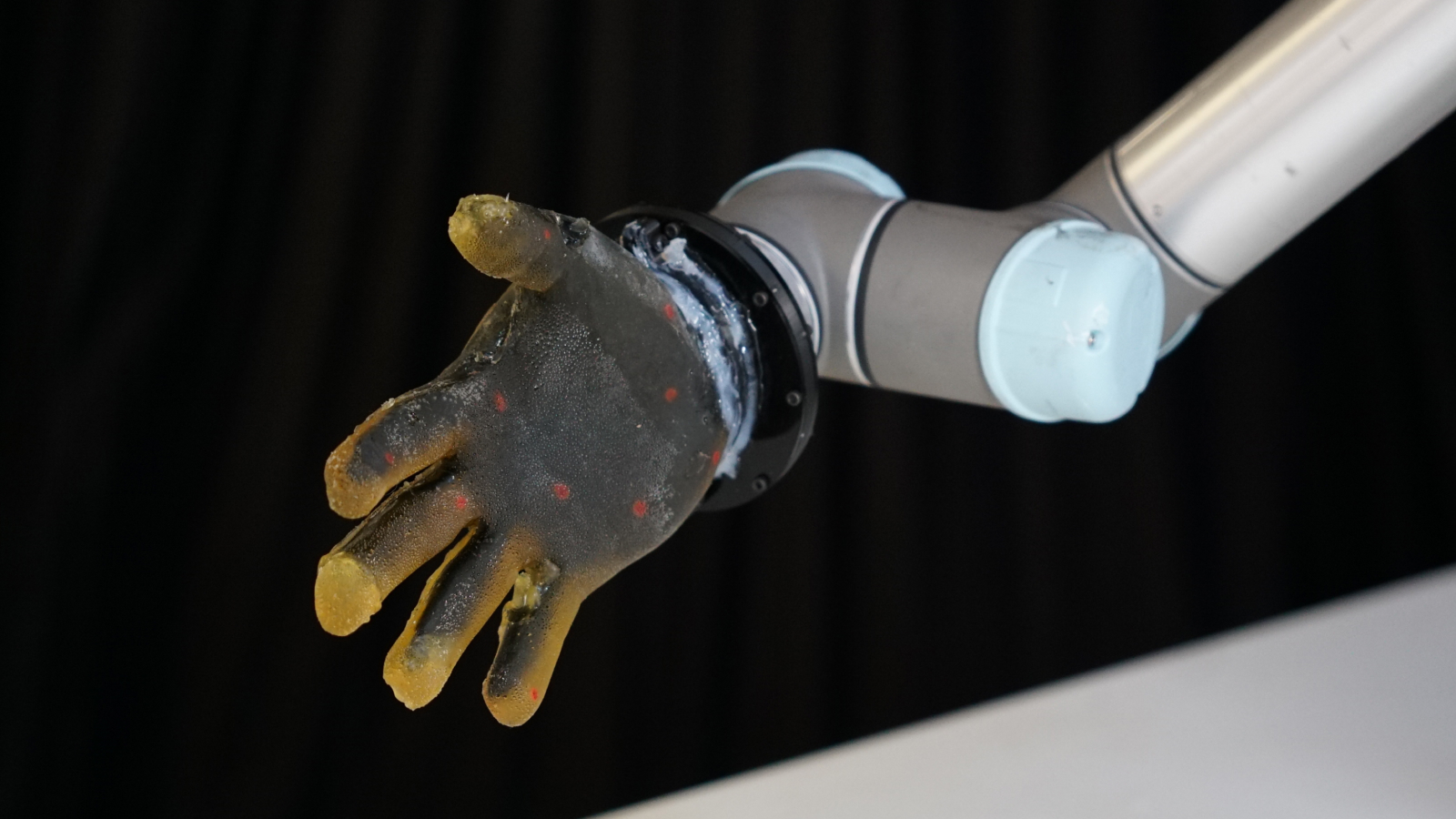Scientists have developed a new type of electronic “skin” that could give robots the ability to “feel” different tactile sensations like pokes, prods and temperature changes — and even the feeling of being stabbed.
The skin is made from an electrically conductive, gelatin-based material that can be molded into different shapes. When equipped with a special type of electrode, the material can detect signals from hundreds of thousands of connective pathways that correspond to different touch and pressure sensations.
The scientists said the material could be used in humanoid robots or human prosthetics where a sense of touch is vital, in addition to having broader applications in the automotive sector and in disaster relief. They published their findings June 11 in the journal Science Robotics.
Tactile sensing has emerged as the next big milestone for robotics, as scientists look to build machines that can respond to the world in a manner akin to human sensitivity.
Electronic skins typically work by converting physical information — like pressure or temperature — into electronic signals. In most cases, different types of sensors are needed for different types of sensation; for example, one to detect pressure, another to detect temperature and so on.
However, signals from these different sensors can interfere with each other, and the materials they are embedded in — traditionally soft silicones or stretchy, rubber-like materials called elastomers — are easily damaged, the scientists said.
Related: Self-healing ‘living skin’ can make robots more humanlike — and it looks just as creepy as you’d expect
This new electronic skin uses a single type of “multi-modal” sensor that is capable of detecting different types of stimuli like touch, temperature and damage.
While it’s still challenging to reliably separate and pinpoint the cause of each signal, multi-modal sensing materials are easier to fabricate and more robust, the scientists said. They’re also less expensive to produce, making them suitable and cost-effective for widespread use.
That’s handy
To test their synthetic flesh, the researchers melted down a soft, stretchy and electrically conductive gelatin-based hydrogel, and cast it into the shape of a human hand. They then equipped the hand with different electrode configurations to see which captured the most useful data from physical interactions, subjecting it to a series of tests to find out.
This rather brutal process involved blasting it with a heat gun, poking it with their fingers and a robotic arm, and cutting it open with a scalpel.
In total, the researchers said they collected more than 1.7 million pieces of information from the skin’s 860,000-plus conductive pathways. They used data gathered from these tests to train a machine learning model that, if integrated into a robotic system, could enable it to recognize different types of touch.
“We’re not quite at the level where the robotic skin is as good as human skin, but we think it’s better than anything else out there at the moment,” study co-author Thomas George Thuruthel, a lecturer in robotics and artificial intelligence (AI) at University College London (UCL), said in a statement.
“Our method is flexible and easier to build than traditional sensors, and we’re able to calibrate it using human touch for a range of tasks.”
